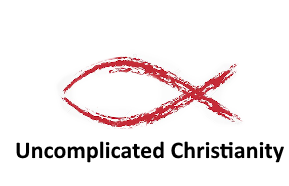
Scholarship Debunks Resurrection & Paganism Myth: In-Depth Study
Below are quotes from Scholars and Historians debunking the myth that Jesus’ resurrection is a myth that was borrowed from pagan religions:
“The first real parallel of a dying and rising god does not appear until A.D. 150, more than a hundred years after the origin of Christianity. So if there was any influence of one on the other, it was the influence of the historical event of the New Testament [resurrection] on mythology, not the reverse.” Dr. Norman Geisler
The conception that the god dies and is resurrected in order to lead his faithful to eternal life is represented in no Hellenistic mystery religion.” – Andre Boulanger, The Gospel and the Greeks: Did the New Testament Borrow from Pagan Thought?, pg. 161-162
“Allegations of an early Christian dependence on Mithraism have been rejected on many grounds. Mithraism had no concept of the death and resurrection of its god and no place for any concept of rebirth—at least during its early stages.” Nash then goes on to say, “Today most Bible scholars regard the question as a dead issue.” – Professor Ronald Nash – ‘Was the New Testament Influenced by Pagan Religions?’
The idea of dying and rising gods is largely a misnomer based on imaginative reconstructions and exceedingly late or highly ambiguous texts.” – JZ Smith, a historian of religion and Hellenistic religions
“From the 1930s. . . a consensus has developed to the effect that the ‘dying and rising gods’ died but did not return or rise to live again. . . Those who still think differently are looked upon as residual members of an almost extinct species” -Tryggve N. D. Mettinger, The Riddle of Resurrection: “Dying and Rising Gods” in the Ancient Near East, pg. 4, 7
Various mystery religions did exist from early times in Greece; however, it is only after the first century a.d. that we begin to have much data on them. It is more likely, therefore, that the mystery religions, observing the success of orthodox Christianity, began to mimic its beliefs and practices, rather than the other way around as the authors suggest. – H. Wayne House, Christian Research institute
“Many of the alleged parallels to this event [Jesus’ resurrection from the dead] are actually apotheosis stories, the divinization and assumption of the hero into heaven (Hercules, Romulus). Others are disappearance stories, asserting that the hero has vanished into a higher sphere (Apollonius of Tyana, Empedocles). Still others are seasonal symbols for the crop cycle, as the vegetation dies in the dry season and comes back to life in the rainy season (Tammuz, Osiris, Adonis). Some are political expressions of Emperor worship (Julius Caesar, Caesar Augustus). None of these is parallel to the Jewish idea of the resurrection of the dead. David Aune, who is a specialist in comparative ancient Near Eastern literature, concludes, “no parallel to them [resurrection traditions] is found in Graeco-Roman biography” – William Lane Craig, The Genre of the Gospels, pg. 48
In fact, most scholars have come to doubt whether, properly speaking, there really were any myths of dying and rising gods at all! In the Osiris myth, one of the best known symbolic seasonal myths, Osiris does not really come back to life but simply continues to exist in the nether realm of the departed.” IBID, Jesus and Pagan Mythology
“Parallels between the pagan myths of dying and rising gods and the New Testament accounts of the resurrection of Jesus are now regarded as remote, to say the least…If anyone borrowed any ideas from anyone, it seems it was the gnostics who took up Christian ideas.” – Alister McGrath, Professor of Historical Theology at Oxford University, Intellectuals Don’t Need God and Other Modern Myths, pg. 121
“Not one clear case of any alleged resurrection teaching appears in any pagan text before the late second century A.D., almost one hundred years after the New Testament was written.” – Dan Story, Defending Your Faith, revised and expanded edition, pg 120
“Which mystery gods actually experienced a resurrection from the dead? Certainly no early texts refer to any resurrection of Attis. Attempts to link the worship of Adonis to a resurrection are equally weak. Nor is the case for a resurrection of Osiris any stronger. After Isis gathered together the pieces of Osiris’s dismembered body, he became “Lord of the Underworld.” – Ronald Nash
“Where do any of the ancient sources speak of a divine man who was crucified as an atonement for sin? So far as I know, there are no parallels to the central Christian claim. What has been invented here is not the Christian Jesus but the mythicist claims about Jesus… The majority of scholars agree… there is no unambiguous evidence that any pagans prior to Christianity believed in dying and rising gods.”[ – Bart Erhman, Professor University North Carolina
“None of this literature is written by scholars trained in the New Testament.” -IBID
“Anyone who thinks that Jesus was modeled on such deities needs to cite some evidence—any evidence at all—that Jews in Palestine at the alleged time of Jesus’s life were influenced by anyone who held such views.” – IBID
For more on the Myths about Christianity see below:
Extra Biblical Evidence that Jesus Did Exist
Scholarship On the Claim that the Resurrection Was Copied From Paganism
Scholarship On the Claims that Jesus Never Existed
Debunking the Atheist Myth That Jesus Was Copied From Other Pagan Deities and Other Myths
Scholarship On The Crucifixion Being A Historical Fact
Scholarship Proves the New Testament is More Accurate than Any Other Historical Text
Debunking Claims about Christmas and Paganism:
Part 1: December 25th was not an Ancient Pagan Holiday
Part 2: Jesus’ Death, Christmas and the Early Church
Part 3: The Winter Birth
Part 4: Should Christians Celebrate Christmas?
On Claims about Easter, Halloween and Paganism:
Ishtar and the Easter Connection
Despite the Modern Myths, Halloween is not rooted in Paganism



This Post Has 0 Comments